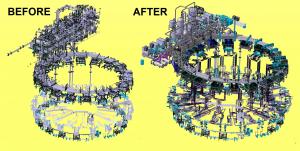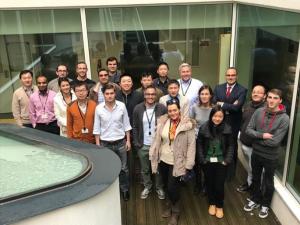Moustafa Moteleb heads the Tokamak Cooling Water System Division at ITER. "With a team of fewer than 30 people at ITER Headquarters, we have been able to produce high-quality work ... improving the initial design of the system, reducing cost, and bringing the first-round of components to the required level of maturity. We have been using Earned Value Management from the start to monitor our own performance against the schedule and to track cost savings."
The final design solution proposed by the ITER TCWS team addresses the important issue of the protecting electronics inside the Tokamak from the effect of activated cooling water—an issue that had been flagged at an earlier design stage. Through the use of specialized expertise and precise modelling tools, the team was able to propose a solution that meets all project requirements on safety.
"The design incorporates a configuration that was approved by Director-General Bigot in June 2015, which significantly improved the investment protection of electronics," says Moustafa. "For many areas, the strategy focused on additional shielding, relocation, and/or the qualification of electronics to withstand the harsh environment. While planning for in-service inspection of TCWS components remains a challenge due to the congestion of equipment, worker exposure rates inside the Tokamak are well below acceptable norms in fission plants."
Now the design of the TCWS piping and components has been confirmed—first at a design readiness review held at US ITER in September, followed by two design integration reviews at ITER in October, and finally in a three-day final review in November attended by approximately 40 experts from the ITER Organization, US ITER, and the industry.
The manufacturing of critical components like heat exchangers and pressurizers, expected on site from 2021 on, can begin.
"It is very exciting to be entering this new phase, with a major part of the design behind us and manufacturing contracts planned in 2018," says Moustafa. "The TCWS team at the ITER Organization dedicates this successful final design review for first-phase components to Responsible Officers Jan Berry and Brad Nelson, who have recently retired from US ITER. They have been involved since the system conceptual design, and without their strong contributions over the years we could not be where we are today."
As for the TCWS team at ITER, they have their work set out for them with the design of second-phase components as well as pre-fabrication engineering studies to reduce the amount of pipe welding carried out on site. Pipe installation will begin in late 2019 inside the Tokamak.



